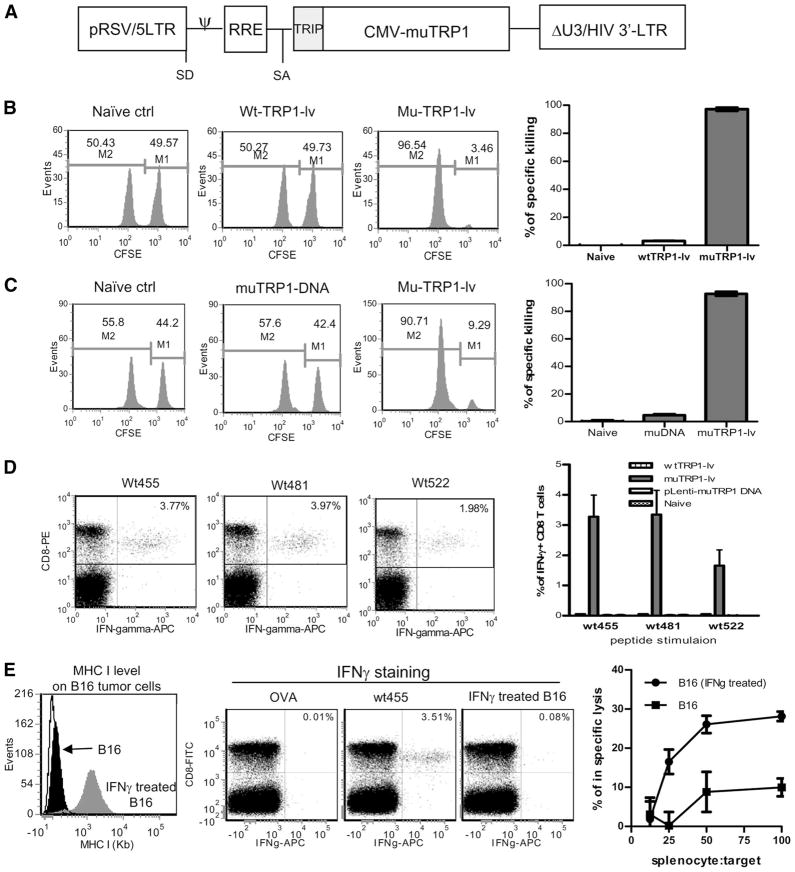FIGURE 1.
Lentivector immunization induces potent CD8 T cell response against multiple epitopes of TRP1. C57BL/6 mice were immunized with 2.5 × 107 TU of lentivector wtTRP1-lv, muTRP1-lv (A), or plasmid pLenti-TRP1 DNA (100 μg) expressing mutated TRP1 (muTRP1 DNA). After 9 days, in vivo CTL activity was measured by 12 h in vivo killing assay. A representative experiment is presented for each group and the calculated percentage of specific killing is summarized in bar graphs (B and C). On day 10 after immunization, splenocytes from immunized mice were collected and intracellularly stained for IFN-γ after 3 h of ex vivo stimulation with three different peptides derived from wtTRP1 (D). Splenocytes from naive mice, DNA-immunized mice, or wtTRP1-lv-immunized mice were unable to produce IFN-γ (data not depicted). The summarized data from three mice of each group are presented in the right panels. E, Splenocytes from muTRP1-lv-immunized mice were also compared for IFN-γ production after restimulation with either wt455 peptides or IFN-γ-treated B16 tumor cells (center panels). IFN-γ treatment increased the MHC level on B16 tumor surface (left panel). Splenocytes stimulated with wt455 peptides in vitro were then examined for their capability of killing B16 tumor cells (right panel). Numbers in B and C represent the percentage of each population. Numbers in the upper right quadrant of D and E indicate the percentage of IFN-γ+ cells of total CD8 T cells. Experiments in B–D were repeated at least five times with similar results. Experiments in E were repeated three times with similar results.

